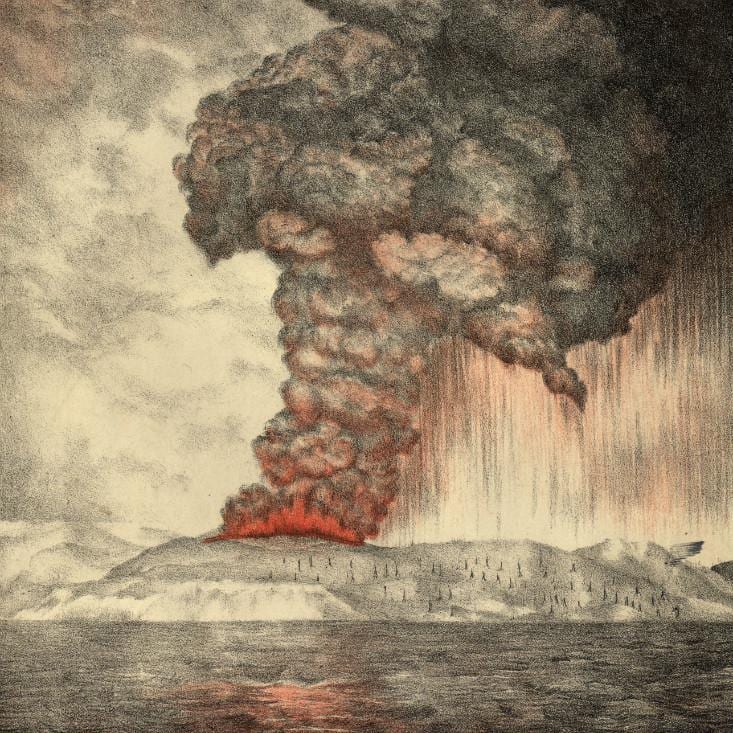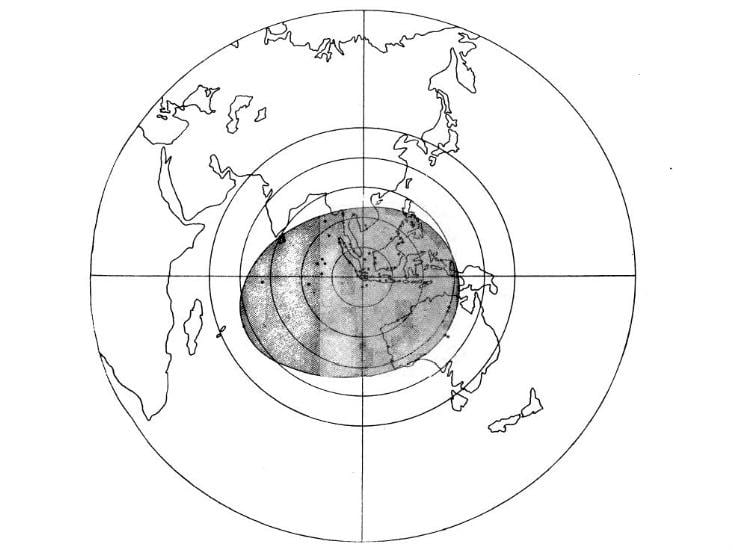Certain sound frequencies are exclusively audible to teenagers, and some retailers utilize devices that produce these specific sounds to deter them from loitering. Typically, humans possess a broader capacity to perceive various frequencies in their youth, which gradually diminishes as they age. These high-frequency sounds are often referred to as “mosquito tones” due to their similarity to the buzzing of mosquitoes. They can be effective at preventing loitering, but their use has raised concerns about potential negative effects on young people’s hearing and general well-being.
The reason snow is able to absorb…
The reason snow is able to absorb sound is because it is porous. Snowflakes are six-sided crystals, and they are filled with open spaces.Those spaces absorb sound waves, creating a quieting effect over a blanket of snow.
The post The reason snow is able to absorb… appeared first on Crazy Facts.
Marconi believed, late on in life…
Marconi believed, late on in life, that no sound ever dies completely. He dreamt of building a device strong enough to pick up the actual words of Jesus at the ‘Sermon on the Mount’.
The post Marconi believed, late on in life… appeared first on Crazy Facts.
In 1940 Disney’s movie “Fantasia” invented…
In 1940 Disney’s movie “Fantasia” invented the concept of stereo sound, eventually changing the music industry forever. To promote the film, Disney created a surround sound system called “Fantasound” that used multiple speakers spread across a room to immerse audiences in the film’s music. 00
The post In 1940 Disney’s movie “Fantasia” invented… appeared first on Crazy Facts.
To find out how sound waves impacted…
To find out how sound waves impacted flavor, researchers played nonstop loops of Led Zeppelin, A Tribe Called Quest and Mozart to cheese wheels. Cheese wheels that were exposed to hip hop music had the strongest flavor.
Cities Are Using This High Pitched ‘Mosquito’ Sound to Get Rid of Teenagers After Curfew
This next viral sensation will make you go Hmmm? Or maybe Ouch!
Kodie Helmer came across the next phenomenon racking up over 95,000 shares on her post:
I need your help!
Okay so I nabbed me a younger man, I said it….I am slightly OLDER than Chris #cougar
BUT I am…
Posted by Kodie Helmer on Sunday, July 21, 2019
“I heard on the radio that some businesses and even towns are using a sound wave as a deterrent for teens after curfew, INTERESTING right?! So I looked into it and found a series of sounds that become harder to hear as you *ahem* age. This one in particular cannot be heard by most people over the age of 40.
I CANNOT FLIPPING HEAR THIS!!! But, Chris Helmer can
I called all our kids in and they were covering their ears!!! So, I got to know below, help me feel better (or worse) Tell me, are you OVER or UNDER 40 and CAN YOU HEAR THIS SOUND?!?!?”
I couldn’t help but check this out. If cities and towns can deter teens with it, it’s gotta be something! Here’s the sound.
Did you hear anything? I sure didn’t! I’m almost forty so my hearing must be going… Drat!
I decided to test this on my husband. He’s forty-three, and I thought if I can’t make out this noise he won’t either. I played it and he shrieked in his recliner, cupping his ears and yelling, “Turn that off! Don’t ever do that again! What the hell is that?”
I asked what it sounded like and he responded, “Like the Devil’s dog whistle.”
(I did play it again. I’m mischievous like that.)
Anyway, it was strange! How could he cringe and shout and I got nothing?
I did some digging on Helmer’s comment about these sounds shooing away teens after dark and came up with something called the Mosquito. It’s a sonic device used throughout Philadelphia and some other municipalities – but it has also been banned in various cities around the world.
What do you think?
The post Cities Are Using This High Pitched ‘Mosquito’ Sound to Get Rid of Teenagers After Curfew appeared first on UberFacts.
The Loudest Sound Ever Heard in Human History
You probably think you know what an extremely loud noise sounds like. If you’ve ever walked by a jackhammer, for example, or stood a little too close to the speakers at a loud concert. But those sounds pale in comparison to what is officially known as the loudest sound ever heard.
It happened on August 27, 1883. On an island in Indonesia, a volcano erupted so violently that it literally tore the island apart. The noise was so loud that people heard it over 3,000 miles away — which would be like hearing a noise from Dublin, Ireland when you’re in Boston.
Photo Credit: Wikimedia
It sounds impossible, and yet it very much happened. People heard the eruption on the island of Krakatoa in over 50 geographical locations across a full thirteenth of the Earth.
At 40 miles away, the sound shattered people’s eardrums. At 1,300 miles away, it sounded like “guns firing.” At 2,000 miles away, it sounded like “a series of loud reports, resembling those of artillery.” And at 3,000 miles away, it sounded like “the distant roar of heavy guns.” By the time the sound reached such a distant location, hours would have passed (the speed of sound is about 767 mph).
Photo Credit: Wikimedia Commons
As you might guess, this was no average volcano eruption. It was devastating enough to wipe out 165 coastal villages and settlements and kill tens of thousands of people.
So, yeah, this is not a record we should aim to break anytime soon! Only truly cataclysmic events can create such loud noise, and it hasn’t happened since 1883.
The post The Loudest Sound Ever Heard in Human History appeared first on UberFacts.
The loudest known noise was created by a volcano…
The loudest known noise was created by a volcano which created sound waves that altered air pressure on earth for 5 days and ruptured the ear drums of sailors 40 miles away from the blast.
Horror movie soundtracks sometimes include infrasound, which is sound…
Horror movie soundtracks sometimes include infrasound, which is sound below the range of human hearing. Even though we can’t hear it we can still feel it and infrasound has been shown to induce anxiety, heart palpitations, and shivering.
Ultrasonic waves have been used to weld plastics together since the 1960s…
Ultrasonic waves have been used to weld plastics together since the 1960s. It works by compressing two thermoplastic materials together on top of an anvil. Ultrasonic waves are then fed through a horn that vibrates their molecules, causing friction that causes heat.


